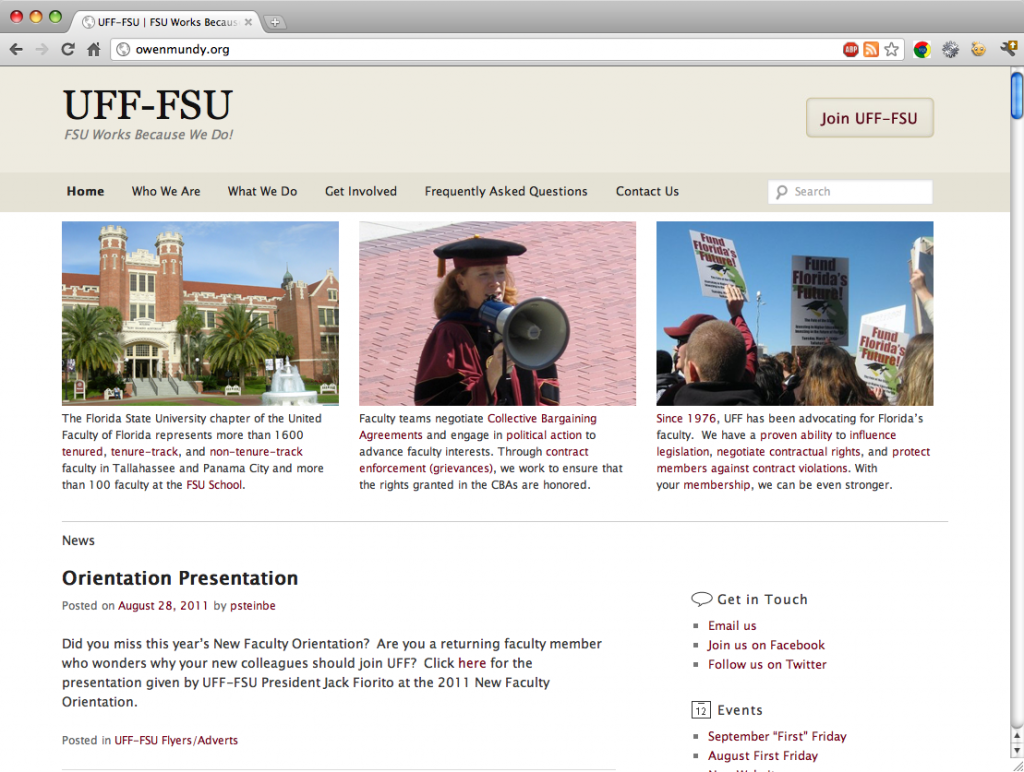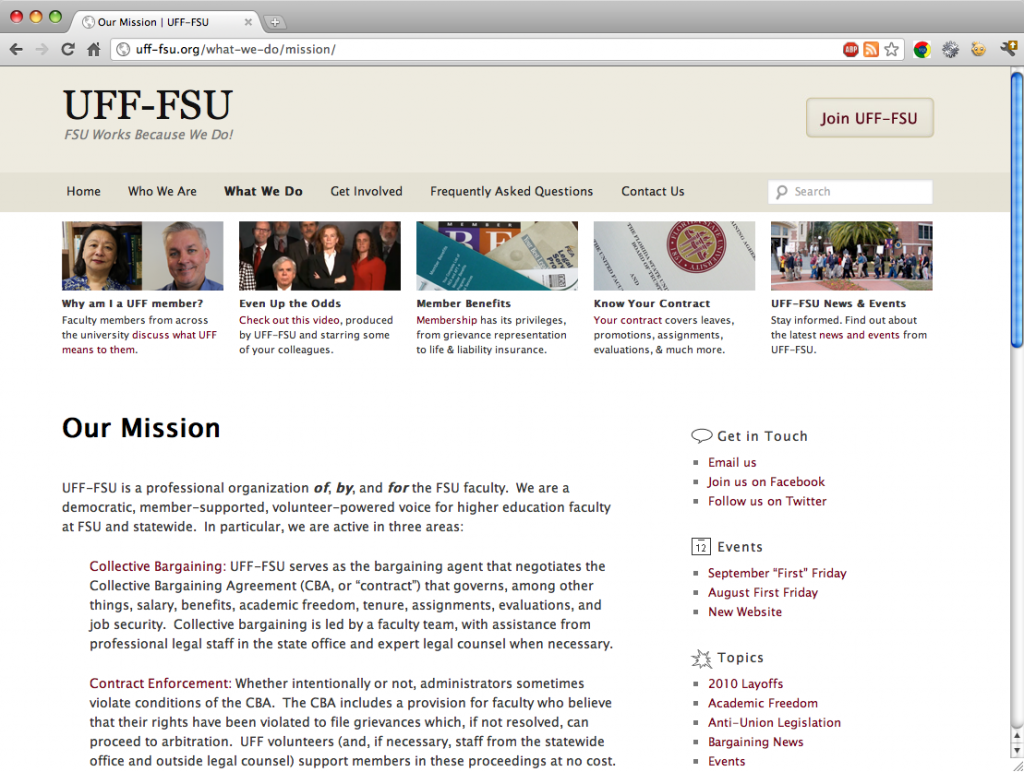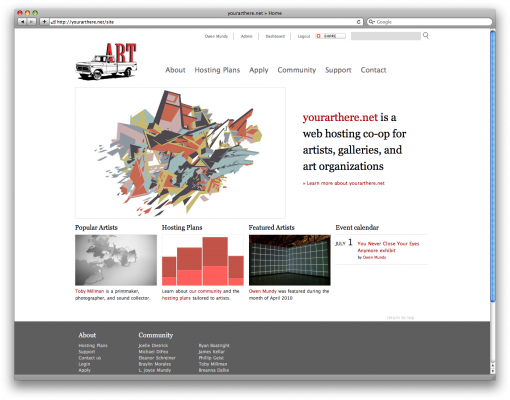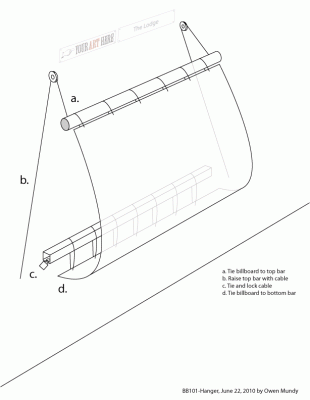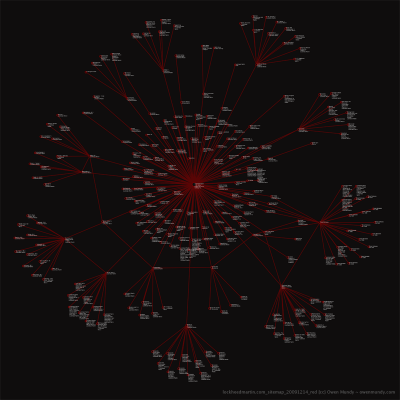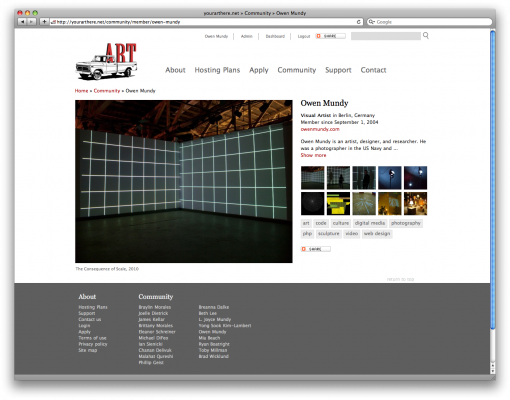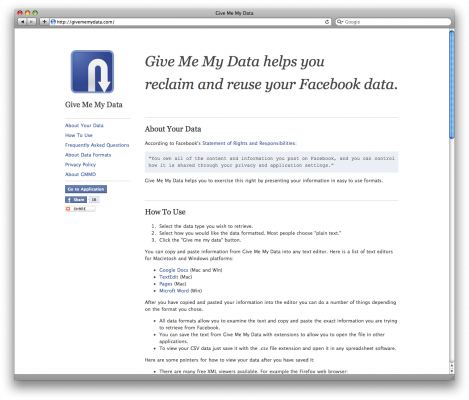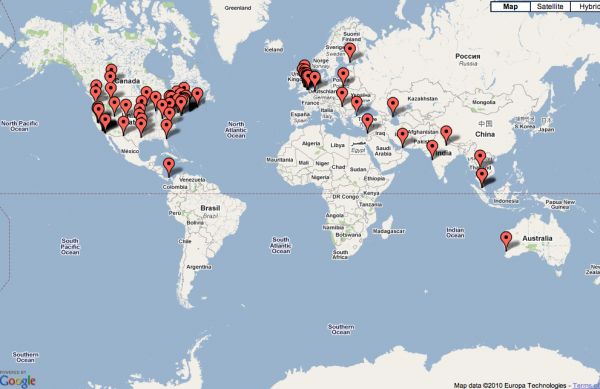I recently completed a redesign of United Faculty of Florida – Florida State University (UFF-FSU) union website at uff-fsu.org with colleague, Phil Steinberg. This site runs on WordPress CMS with an altered Twenty Eleven theme. Here are some screenshots:
Category: launch
Give Me My Data upgrade: New API, authorization, and data formats
No one would be surprised to learn that almost all of the user-generated content websites use our personal data to sell advertisements. In fact 97% of Google’s revenue comes from advertising.[1] That’s why it’s important these sites provide as much access as possible to the real owners of our data‐us. After all, we put it there and allow them to use it in exchange for the use of their software. Seems like a fair trade if you ask me.
A year and a half ago Facebook didn’t provide any access. That’s why I created Give Me My Data, to help users reclaim and reuse their personal data they put on Facebook.
By giving more agency to users of online systems, Give Me My Data may have already impacted the nature of online application development. In November 2010, almost a year after I launched Give Me My Data, Facebook created their own service for users to export their profile from Facebook as a series of HTML pages. Unlike Give Me My Data, the Facebook service doesn’t allow you to select which data you want or to choose custom formats to export. It also doesn’t give you options for visualization like the custom network graphs that Give Me My Data offers.
I believe their motivation originates in part with my application, likely due to the popularity of Give Me My Data, and points to the potential usefulness of similar apps. While years down the road may reveal many other online systems giving users control over their data, I see this as a positive effect where the content we create, as well as the means to share and manage it, are democratized.
Meanwhile, the above also keeps me hard at work developing the Give Me My Data project. This week I rewrote the program to use Facebook’s new OAuth authorization, which also required rewriting all of the code that fetches the data. Previously it used the REST API which is being deprecated (sometime?) in the future. I also added new data types, fixed the CSV format (which had the rows and columns mixed-up), and added the possibility to export in the JSON data format.
Finally, in the data selector, I distinguished standard data and customized data types. When I say customized, I mean that I’ve written code that mashes together more than one data table and/or addresses a specific question. For example, right now users can select from two types of network graphs and corresponding formats. One describes the user’s relationship to their friends, and the other describes the user’s relationship to their friends, as well as all their friends’ relationships to each other in various graph description languages. This is how I made the network graph image below. I’m also interested in hearing other suggestions for custom queries I might add. The project will be open source on Github soon, so even code contributions will be welcome.
Anyway, please try out the new version. You may have to delete the app from your allowed applications and then re-authorize it if you’ve used it before. As usual, you can provide feedback on the application page, and you can also contact me on Twitter via @givememydata.
[1] “Google Financial Tables for Quarter ending June 30, 2009” Retrieved October 13, 2010
Give Me My Data and exporting mutual friends
On the one-year anniversary of the beginning of Give Me My Data I’m very happy to announce that you can now export your friends and your mutual friends from facebook using two new formats. Both of the data formats are geared towards making graphs by displaying objects and their relationships. Needless to say, this is the most often requested feature since the official beta launch in April 2010. See below for more information
The DOT language
DOT is a plain text graph description language and can be rendered using a variety of layout applications like Graphviz or Tulip.
This example (saved as a plain text file with the .dot extension)
graph G
{
a -- b -- c;
b -- d;
}
Produces something like this

Python / Nodebox 1.0

The other file format is also for visualizing relationships. You can copy and paste the contents into a plain text file saved with a .py extension and open it in Nodebox, a Mac application that uses Python to create 2D visuals. Learn more about creating graphs in Nodebox.
Here’s an example file. My mutual friends exported from Facebook…

Keyword Intervention update
I launched Keyword Intervention in January 2007 and for almost four years now it has been scraping topical search terms and attracting random traffic. Today I moved the project to its own domain, keywordintervention.com and also updated the documentation on the site. Below is a sample of the last 500 search terms by users all around the world. The full list is here.
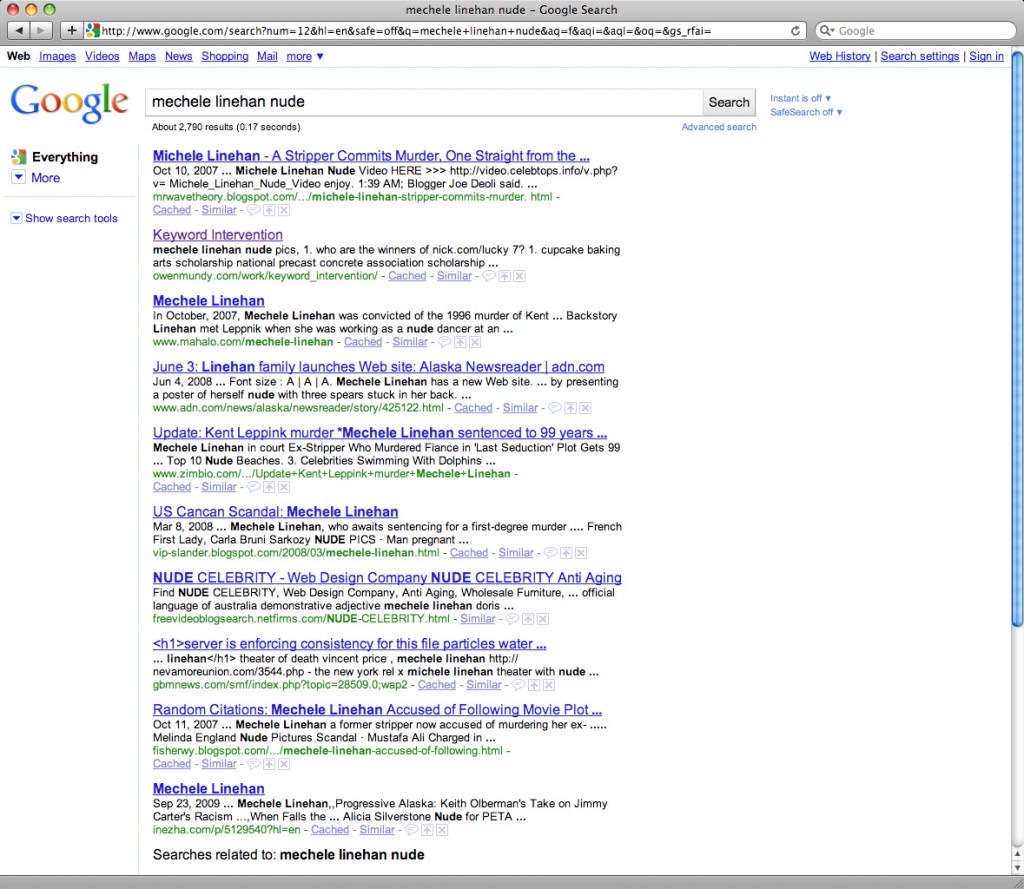

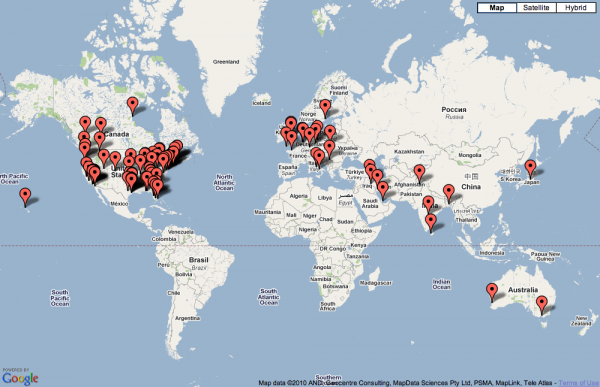
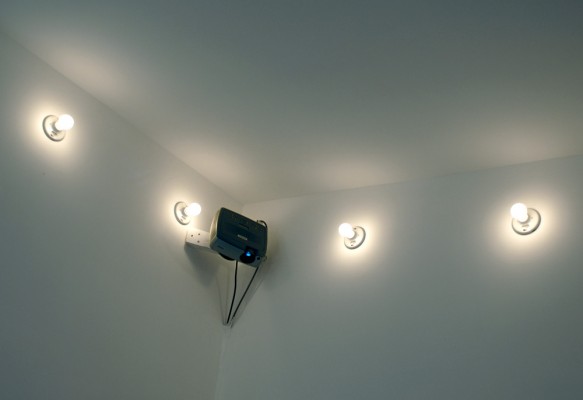
Recent and ongoing projects
Howdy, it’s been awhile since I last shared news about recent and ongoing projects. Here goes.
1. You Never Close Your Eyes Anymore
You Never Close Your Eyes Anymore is an installation that projects moving US Geological Survey (USGS) satellite images using handmade kinetic projection devices.
Each device hangs from the ceiling and uses electronic components to rotate strips of satellite images on transparency in front of an LED light source. They are constructed with found materials like camera lenses and consumer by-products and mimic remote sensing devices, bomb sights, and cameras in Unmanned Aerial Vehicles.
The installation includes altered images from various forms of lens-based analysis on a micro and macro scale; land masses, ice sheets, and images of retinas, printed on reflective silver film.
On display now until July 31 at AC Institute 547 W. 27th St, 5th Floor
Hours: Wed., Fri. & Sat.: 1-6pm, Thurs.: 1-8pm
New video by Asa Gauen and images
http://owenmundy.com/site/close_your_eyes
2. Images and video documentation of You Never Close Your Eyes Anymore will also be included in an upcoming Routledge publication and website:
Reframing Photography: Theory and Practice
by Rebekah Modrak, Bill Anthes
ISBN: 978-0-415-77920-3
Publish Date: November 16th 2010
http://www.routledge.com/books/details/9780415779203/
3. Give Me My Data launch
Give Me My Data is a Facebook application designed to give users the ability to export their data out of Facebook for any purpose they see fit. This could include making artwork, archiving and deleting your account, or circumventing the interface Facebook provides. Data can be exported in CSV, XML, and other common formats. Give Me My Data is currently in public-beta.
Website
http://givememydata.com/
Facebook application
http://apps.facebook.com/give_me_my_data/
4. Give Me My Data was also covered recently by the New York Times, BBC, TechCrunch, and others:
Facebook App Brings Back Data by Riva Richmond, New York Times, May 1, 2010
http://gadgetwise.blogs.nytimes.com/2010/05/01/facebook-app-brings-back-data/
5. yourarthere.net launch
A major server and website upgrade to the yourarthere.net web-hosting co-op for artists and creatives. The new site allows members of the community to create profiles and post images, tags, biography, and events. In addition to the community aspect, yourarthere.net is still the best deal going for hosting your artist website.
Website
http://yourarthere.net
More images
http://owenmundy.com/site/design_yourarthere_net
6. The Americans
The Americans is currently on view at the Northwest Florida State College in Niceville, FL. It features a new work with the same title.
More images
http://owenmundy.com/site/the-americans
7. Your Art Here billboard hanger
I recently designed a new billboard hanging device and installed it in downtown Bloomington, IN with the help of my brother Reed, and wife Joelle Dietrick.
Stay tuned here for news about Your Art Here and the new billboard by Joelle Dietrick.
http://www.facebook.com/pages/Your-Art-Here/112561318756736
8. Finally, moving to Berlin for a year on a DAAD fellowship to work on some ongoing projects, including Automata.
More images
https://owenmundy.com/blog/2010/07/new-automata-sitemaps/
I’ll be giving a paper about Automata at the upcoming ISEA2010 conference in Ruhr, Germany.
http://www.isea2010ruhr.org/conference/tuesday-24-august-2010-dortmund
Many thanks to Chris Csikszentmihályi, Director of the Center for Future Civic Media http://civic.mit.edu/ , for inviting me to the MIT Media Lab last August to discuss the project with his Computing Culture Group: http://compcult.wordpress.com/
New yourarthere.net website is live
After 4 months the new yourarthere.net website and member-run content management system is now live. Thanks to Braylin and Brittany Morales, Beth Lee, and Chris Cumbie for all their hard work.
The site is valid XHTML/CSS and runs on PHP/MySQL using the Codeigniter framework. All the details from our research from inception onward are archived here.
This site is based around the idea that members should have control of the content on the website. Every member has a profile where they can add images, text, tags, and events to promote their artwork or group. Members can create a new profile for every domain they host with yourarthere.nets.
Give Me My Data updates
Give Me My Data is a Facebook application that helps you reclaim and reuse your facebook data. It is currently in-development but starting to receive an amazing amount of traffic from Facebook users. Apparently the developers at Facebook made a change to the interface this week leaving many users unable to find or display specific information they had added to their pages. Give Me My Data helps users circumvent the problems they are having with the interface by giving them another way to access their data.
Due to the amount of questions I have received about the application I decided to launch a new website to share information about it here: givememydata.com
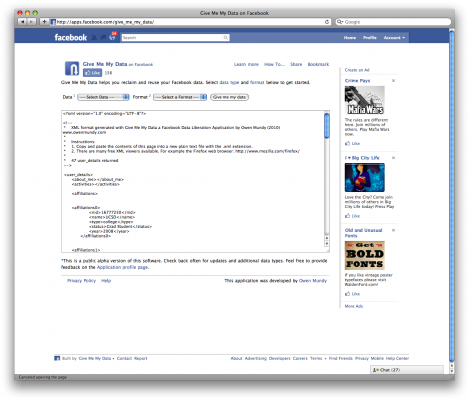
Facebook application interface
